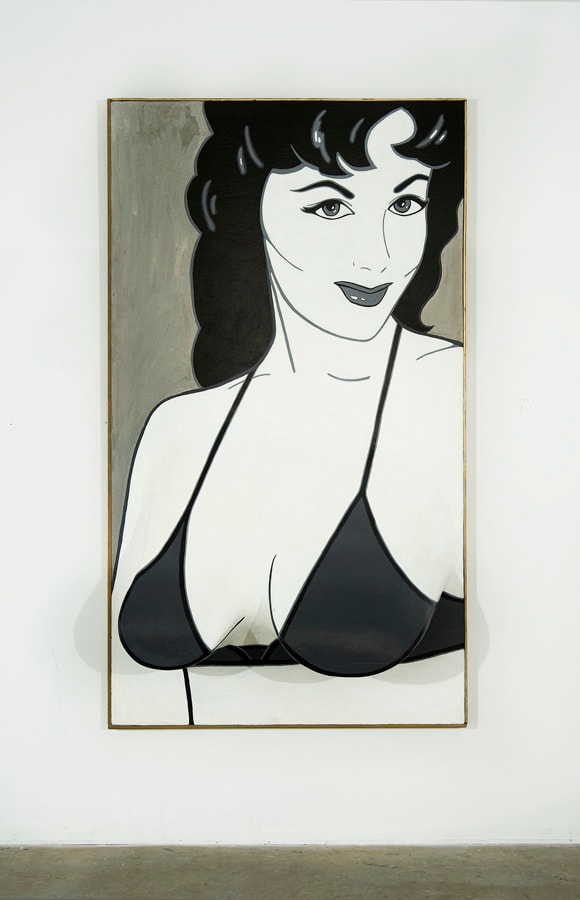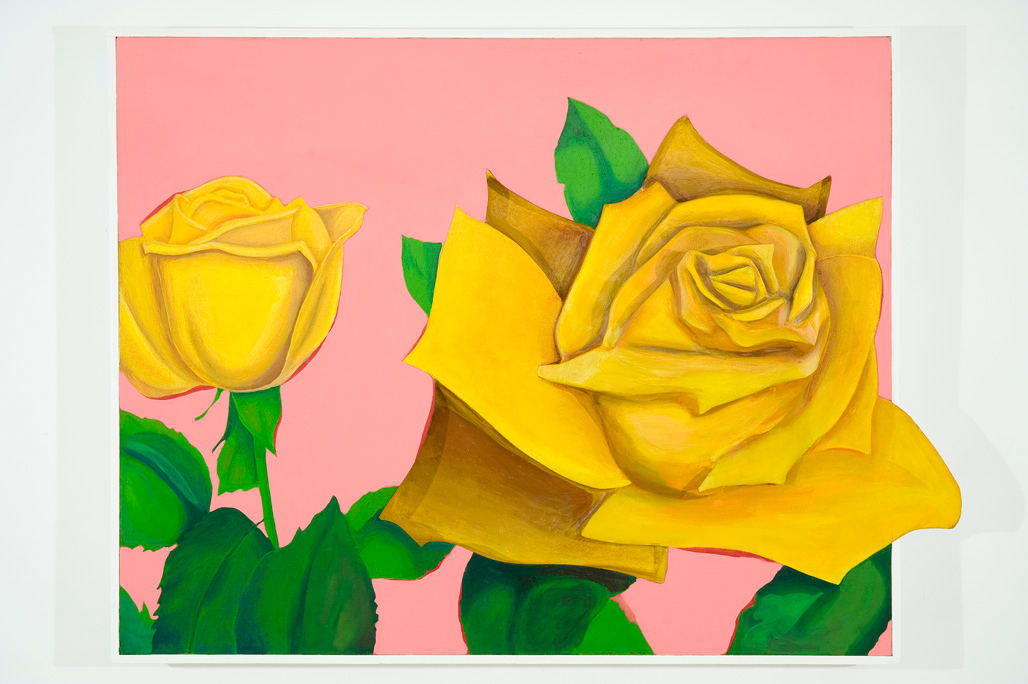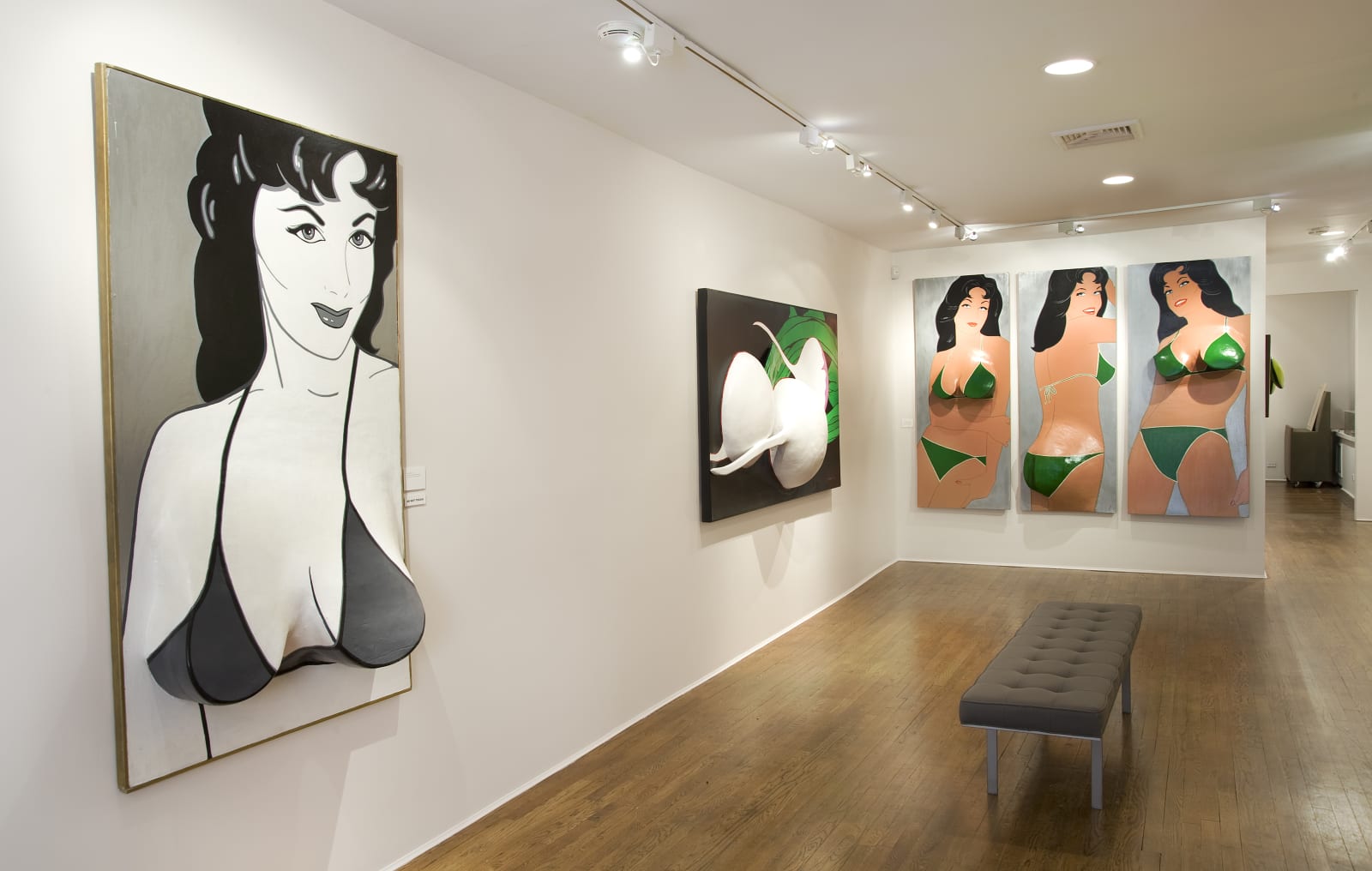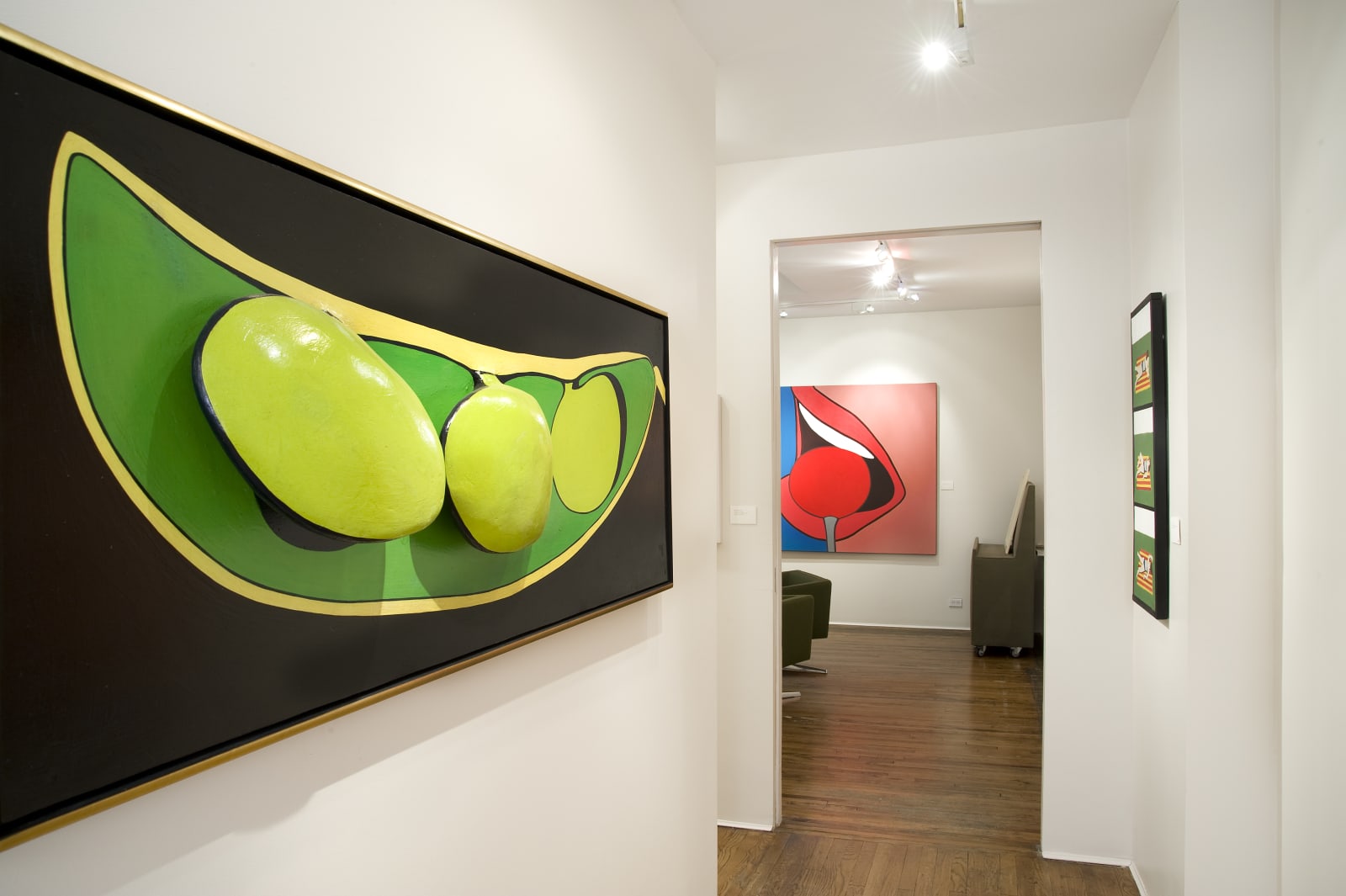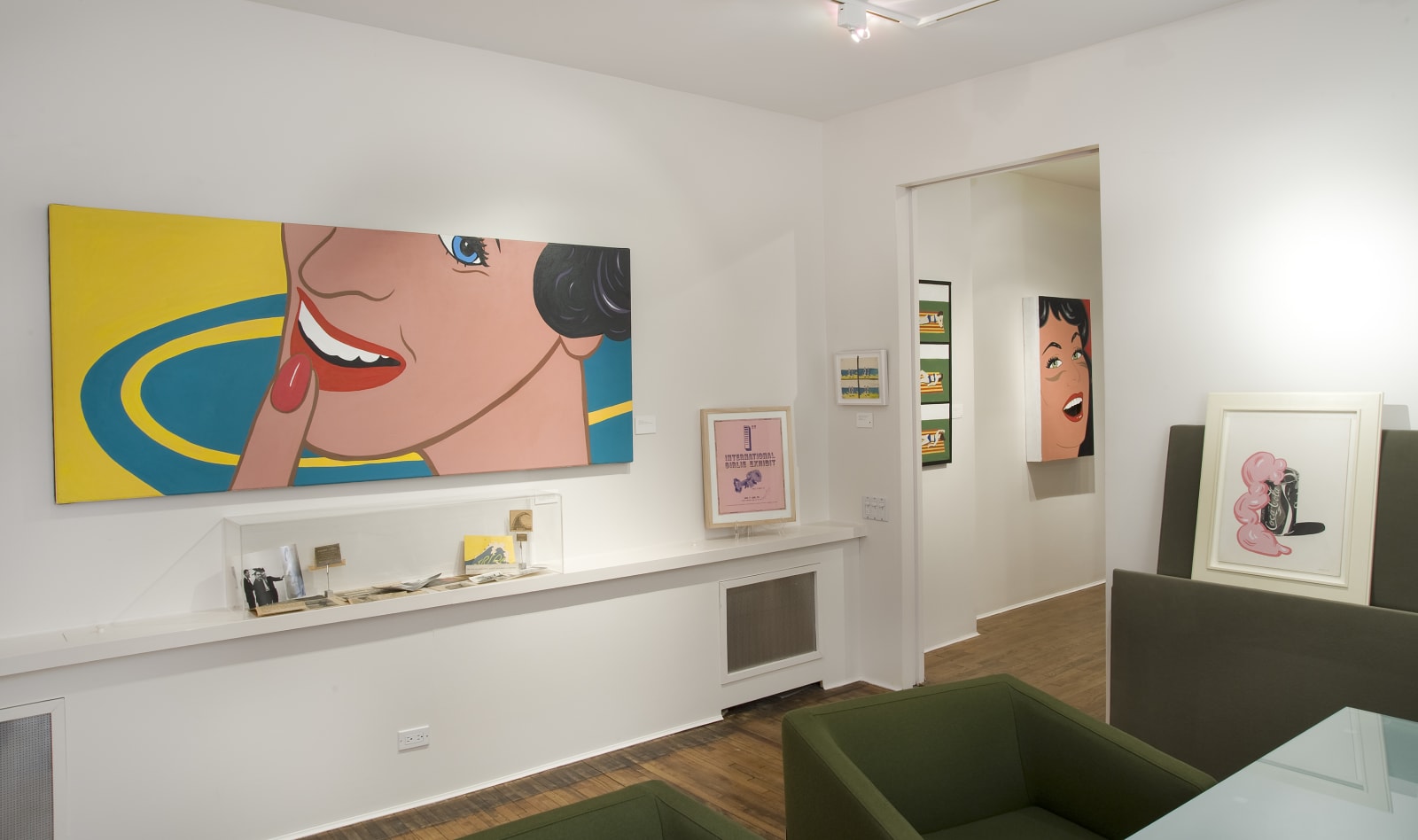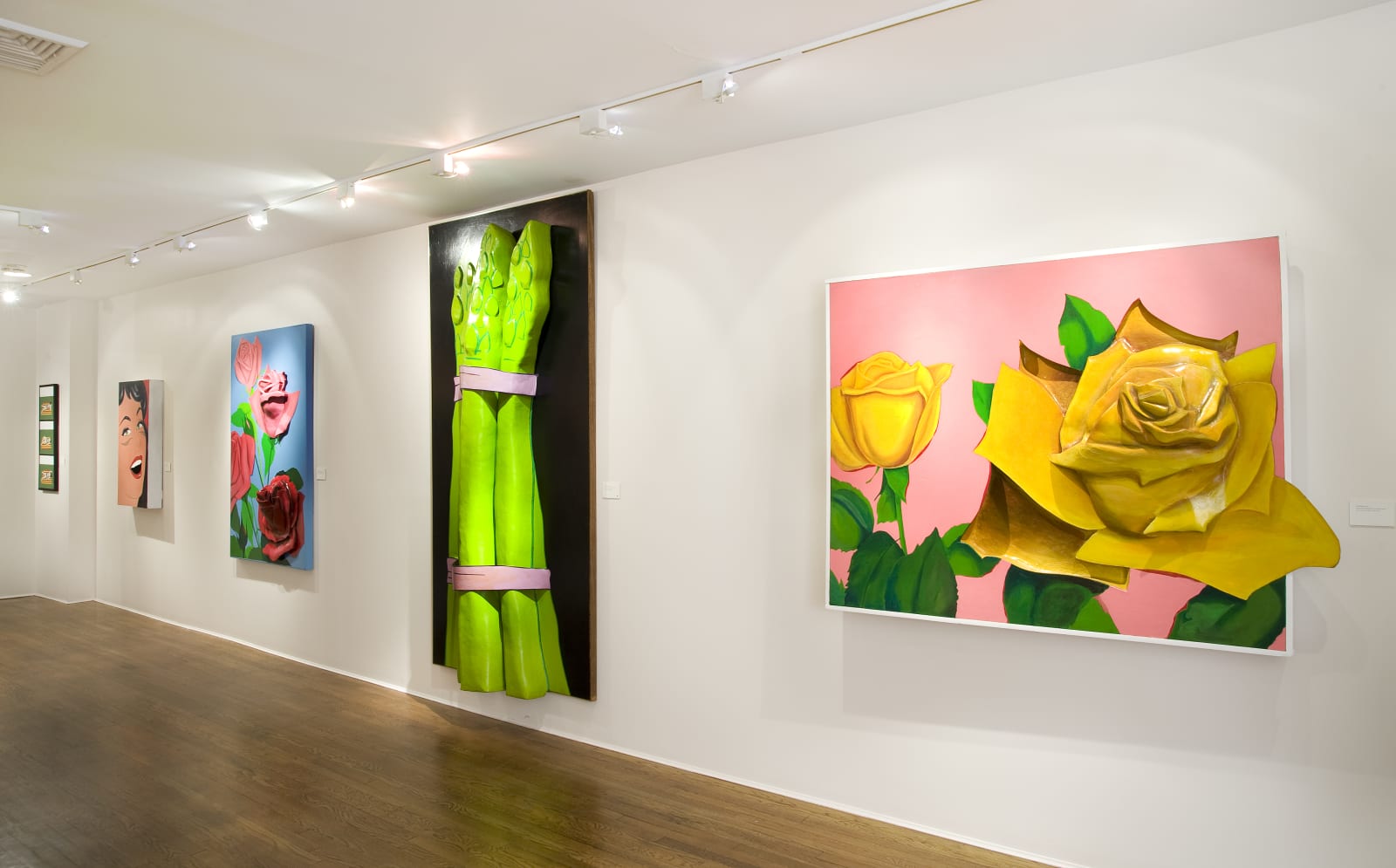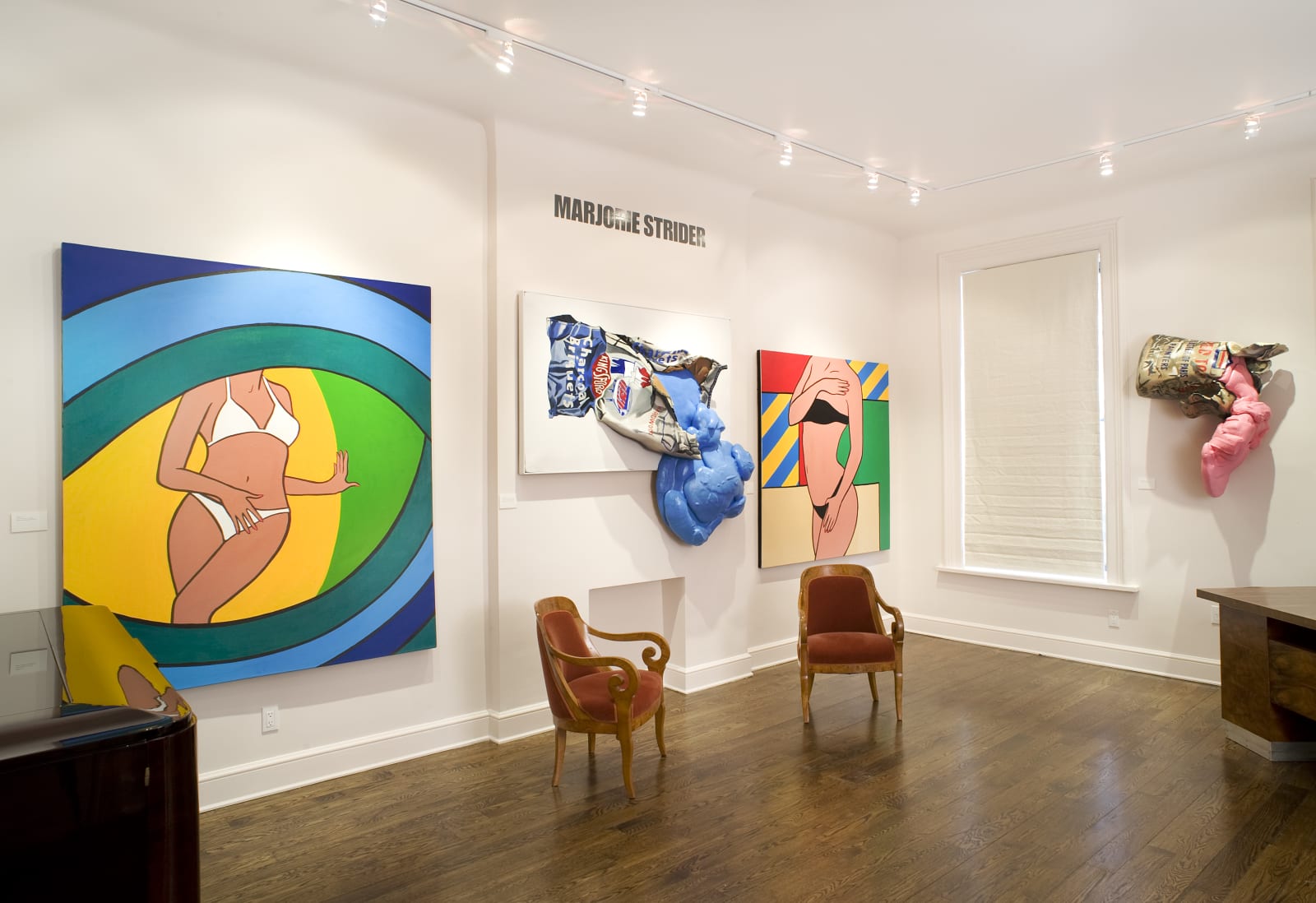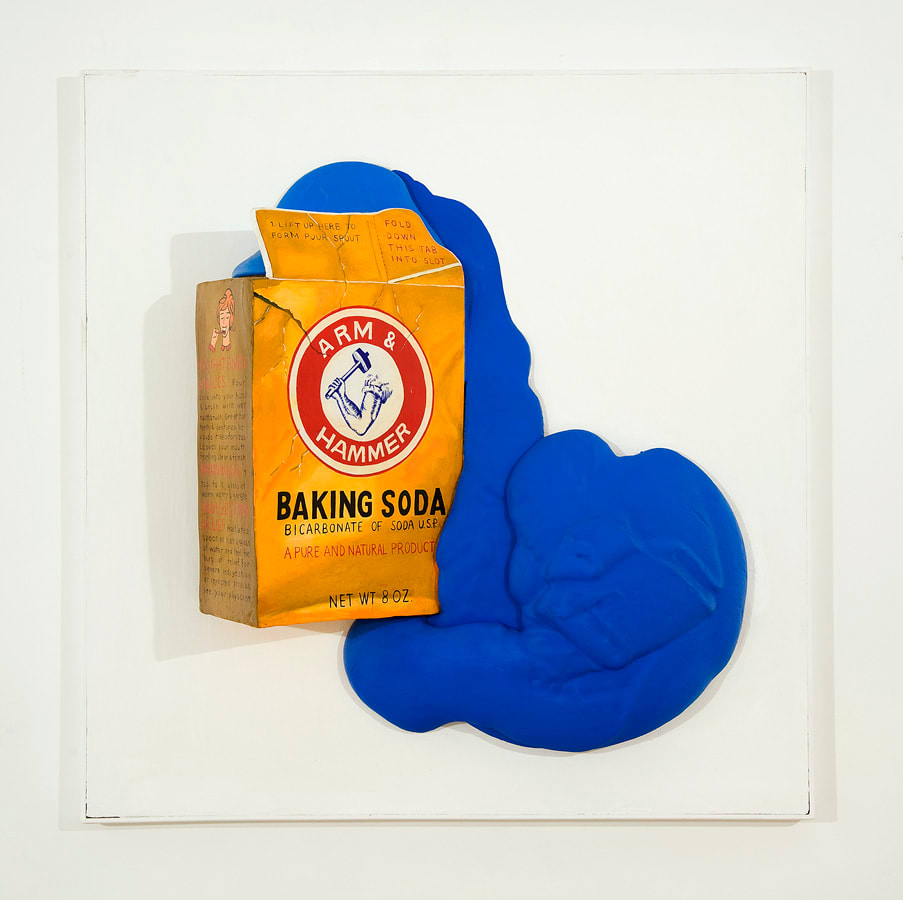
Bold, suggestive, and challenging, her paintings, sculptures, and built-out reliefs transgress conventions with great intelligence and mischief.
Hollis Taggart Galleries is pleased to present Marjorie Strider’s first New York City exhibition in 15 years. Bold, suggestive, and challenging, her paintings, sculptures, and built-out reliefs transgress conventions with great intelligence and mischief.
With more than 40 artworks on view from the 1960s, 1970s, and today, the exhibition includes pieces dating from Strider’s early exhibitions at Pace Gallery, including the influential “First International Girlie Exhibit” of 1964 and two subsequent solo shows. Strider’s bikinied beauties, such as the woman in Green Triptych (1963), acknowledge the fantasy of the pin-up girl while simultaneously dispelling it. These pieces were a focus of the Brooklyn Museum’s recent “Seductive Subversion: Women Pop Artists 1958–1968,” which was named best national thematic show by the U.S. Art Critics Association.
Hollis Taggart Galleries is pleased to present Marjorie Strider’s first New York City exhibition in 15 years. Bold, suggestive, and challenging, her paintings, sculptures, and built-out reliefs transgress conventions with great intelligence and mischief.
With more than 40 artworks on view from the 1960s, 1970s, and today, the exhibition includes pieces dating from Strider’s early exhibitions at Pace Gallery, including the influential “First International Girlie Exhibit” of 1964 and two subsequent solo shows. Strider’s bikinied beauties, such as the woman in Green Triptych (1963), acknowledge the fantasy of the pin-up girl while simultaneously dispelling it. These pieces were a focus of the Brooklyn Museum’s recent “Seductive Subversion: Women Pop Artists 1958–1968,” which was named best national thematic show by the U.S. Art Critics Association.
In the current exhibition, reliefs and sculptures including Green Horizontal (1964) and Soda Box (1973) demonstrate Strider’s facility with carving and her exploration of polyurethane foam. Their clear contours and everday subjects demonstrate her early identification with Pop art; as she explained, however, “it wasn’t Pop art to me. It was more involved in form and color.”
This exhibition also presents recent paintings that return to the subject matter that launched her career. In Big Bite and Invitation (both 2010), Strider continues to explore color and form through simplified and cropped compositions. And in paintings such as Descending and Eyeful, both from 2010, Strider evokes references from art history (Duchamp) and popular culture (James Bond) with wit and enthusiasm.
The exhibition is accompanied by a catalogue with an essay by award-winning poet and critic John Yau.









